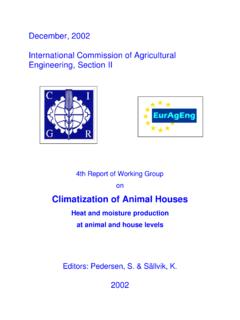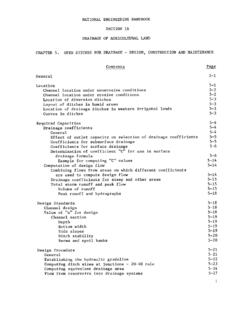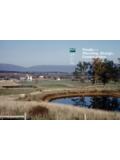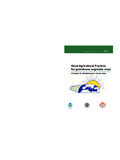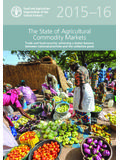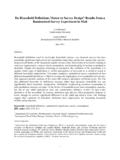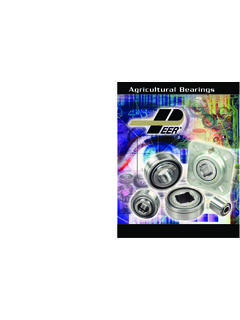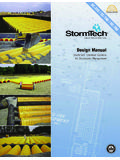Transcription of The Design of Dairy Cow and Replacement Heifer …
1 CIGR Recommendations of Dairy Cow and Replacement Heifer HousingThe Design of Dairy Cow and Replacement Heifer HousingReport of the CIGR Section II Working Group N 14 Cattle housing , 2014 Commission Internationale du G nie RuralInternational Commission of Agricultural and Biosystems EngineeringMembers of CIGR Section II Working Group No 14, Cattle HousingJosi FLABA, PresidentDirection g n rale de l Agriculture, des Ressources naturelles et de l Environnement (DGARNE) Chauss e de Louvain 14B5000 NAMUR, BelgiumHeiko GEORGI nstitut f r kologischen Landbau, Johann Heinrich von Th nen InstitutTrenthorst 32 D-23847 WESTERAU, GermanyRobert E. GRAVESThe Pennsylvania State UniversityDepartment of Agricultural and Biological Engineering201 Agricultural Engineering BuildingUniversity Park - PA 16802-1909, USAJoop LENSINKG roupe ISA Lille, Agricultural Department48, Boulevard Vauban F59046 LILLE cedex, FranceJim LOYNESE ngineering Department, Harper Adams University NEWPORT, Shropshire, England, TF10 8 NBElfriede OFNER-SCHR CKLehr- und Forschungszentrum f r Landwirtschaft (HBLFA)Agricultural Research & Education Centre Raumberg Gumpenstein (AREC)
2 A8952 IRDNING, AustriaTom RYANT eagasc, Kildalton College PILTOWN, Co Kilkenny, IrelandLudo VAN CAENEGEMA groscope Reckenholz-T nikon, Research Station ART CH-8356 ETTENHAUSEN, SwitzerlandMichael VENTORPS wedish University of Agricultural Box 108, S - 230 53 ALNARP, SwedenPaolo ZAPPAVIGNADISTAL - Department of Agricultural and Food Sciences, University of BolognaViale G. Fanin 50, 40127 BOLOGNA42100 REGGIO EMILIA, Italy Acknowledgements. The authors also wish to recognise and thank the following for their input: W. Bickert (USA), J. Capdeville (France), R. Kaufmann (Switzerland), JJ. Lenehan (Ireland), M. Tillie (France) and many oth-er persons for their valuable contribution.
3 Special thanks go to for his assistance with the final layout. CIGR Section II working group No 14 Cattle housing ISBN 978-2-9552352-0-1 1. Foreword ..22. Fundamentals .. BODY DIMENSIONS .. BASIC LINEAR DIMENSIONS .. CIGR STANDARDS ANIMAL DIMENSIONS .. RELATIONSHIP BETWEEN LINEAR BODY DIMENSION AND BODY DESIGNING FACILITIES TO MEET ANIMAL NEEDS .. BASIC ANIMAL NEEDS AND REQUIREMENTS .. ANIMAL HEALTH .. CATTLE BEHAVIOUR .. ENVIRONMENT AND HEALTH .. THE STOCKPERSON .. ENVIRONMENTAL REQUIREMENTS .. INTRODUCTION .. AIR TEMPERATURE .. AIR RELATIVE HUMIDITY .. RADIANT TEMPERATURE .. AIR VELOCITY .. COMBINED PARAMETERS .. AIR QUALITY .. LIGHT.
4 NOISE .. SUSTAINABILITY AND PRODUCTION SYSTEMS .. GENERAL DEFINITION .. SUSTAINABILITY AND AGRICULTURAL BUILDINGS PRACTICAL ASPECTS WHEN CONSTRUCTING A Dairy BUILDING .. SOCIO-ECONOMIC ASPECTS, ANIMAL WELFARE AND HEALTH .. APPROACHES TO SUSTAINABLE PRODUCTION SYSTEMS ..133. Aspects of Design .. LOOSE housing SYSTEMS .. INTRODUCTION .. CUBICLE SYSTEMS (FREESTALL) .. STRAW YARD SYSTEMS .. ADVANTAGES AND DISADVANTAGES OF THE LOOSE housing .. TIED housing .. INTRODUCTION .. DIMENSIONS OF TIE STALL STALL FLOORS AND BEDDING .. THE SYSTEMS AND FACILITIES FOR RESTRAINING THE ANIMALS .. CALVING AND NURSING BOXES .. WATERING .. COW TRAINERS.
5 FEEDERS .. INTRODUCTION .. NUMBERS OF FEEDING PLACES .. GENERAL DIMENSIONS .. FEEDING BARRIER Design .. DEVICES FOR MOVING THE FEED .. HAY RACKS .. BALE FEEDERS .. CONCENTRATE FEEDERS .. DRINKERS .. INTRODUCTION .. DRINKING WATER REQUIREMENTS .. POSITION OF THE HEAD AND COW BEHAVIOUR .. WATER QUALITY .. DRINKING FACILITIES GENERAL REQUIREMENTS .. FREEZING .. ACCESS/LOCATION OF DRINKERS .. NUMBER OF BOWLS/DRINKERS .. TECHNICAL SPECIFICATIONS .. FLOORING .. INTRODUCTION .. FLOORING SYSTEMS .. STRUCTURAL REQUIREMENTS .. ANIMAL FLOOR INTERFACE ..31 Table of FLOOR MATERIALS AND FLOOR TYPES .. MILKING FACILITIES .. INTRODUCTION .. ELEMENTS OF A MILKING FACILITY.
6 MILKING PARLOURS .. Design OF PARLOUR SURROUNDINGS .. PARLOUR ENTRANCE AND EXIT: COLLECTING YARDS .. OTHER AREAS .. SPECIAL REQUIREMENTS OF AN AUTOMATIC MILKING SYSTEM (AMS) .. CLIMATE CONTROL .. GENERAL .. VENTILATION .. REDUCING HEAT STRESS .. FACILITIES FOR CALVES AND Replacement heifers .. INTRODUCTION .. housing SYSTEMS FOR CALVES .. FEEDING FACILITIES .. VENTILATION .. housing SYSTEMS FOR Replacement SPACE FOR ANIMAL CIRCULATION .. PASSAGEWAYS .. PASSAGEWAY FENCE AND WALL HEIGHT .. PASSAGEWAY WIDTH .. DOORS .. SPECIAL NEEDS FACILITIES AND ANIMAL HANDLING .. INTRODUCTION .. LOCATION .. HOLDING PENS .. housing OF TRANSITION COWS.
7 CLOSE-UP AND CALVING PENS .. TREATMENT AND HANDLING FACILITIES .. FACILITIES FOR OTHER SPECIAL Dairy COWS .. HUMAN/WORKERS SAFETY AND HEALTH .. INTRODUCTION .. ANIMAL HANDLING .. MOVEMENT OF CATTLE .. MILKING .. INSPECTION AND TREATMENT OF housing ENVIRONMENT .. ANCILLARY ACTIVITIES ..58 REFERENCES AND FURTHER READING ..5921. ForewordThe definition of Dairy cow housing characteristics requires the understanding and knowledge of various interre-lated subjects such as: ethology, animal husbandry, handling of the animals, optimization of the working conditions, protection of the people against accidents, ventilation of livestock buildings, properties of materials, landscape integration, manure management, means that, in the majority of the cases, competences of several specialists must be combined to produce a Design solution that, as far as possible, approaches the ideal and satisfies the farmers dream, whether it is the de-sign of a new building to house their animals that are in full lactation, in a dry period or in a period of rearing.
8 The overall cost of the project must also be taken into account, because it has an impact on the production cost of the milk , scientific literature and knowledge is continually being added to by the results of research work de-voted to one or more of the aspects evoked above. This allows the designer of livestock buildings to have access to multiple, varied and invaluable sources of information, which they then include in each step of the Design process. The challenge is then to integrate all this information into the project and produce a coherent Design with which both the user and the designer can be document, which has been compiled by the Cattle housing working group of the International Commission of Agricultural and Biosystems Engineering (CIGR) has, hopefully, combined the many scientific data and the range of expertise of its members in many aspects of cattle housing .
9 It is the result of an enthusiastic and profitable collabo-ration that has been spread out over several years. Indeed, the group has included specialists originating from 10 countries across Europe and North America, who have invested a considerable amount of time and effort to produce a document which they hope will be useful to all those involved in the Design of cattle housing (designers, farmers, manufacturers etc.). They also hope that it will contribute to place Dairy cows in excellent housing conditions and that it will help to increase the sustainable character of the Dairy was, for me, a privilege to chair, as well as take part in, the work of the working group and I thank each member for their devotion to duty and the enthusiasm they have shown throughout the process.
10 I would also like to thank all those behind the scenes who have, in one way or another, also contributed to the realization of this FLABA32. BODY BASIC LINEAR DIMENSIONSK nowledge of the basic dimensions of animals and the space they require to perform basic behaviours, lying, feed-ing or walking, is fundamental to the Design of cow hous-ing. Farmers seldom measure their animals before making decisions about housing . If successful housing solutions are to evolve, then farmers should be encouraged to make at least the basic measurements as outlined in Fig or be guided by standard Design figures, where: H - Height at withers L - Diagonal body length W - Width of chest Figure : body dimensions of CIGR STANDARDS ANIMAL DIMENSIONS Table CIGR-Standard is an overview of existing-animal dimensions of heifers and cows that can be adapted for practical Design work, in the absence of more precise knowledge of the size of animals to be housed.
